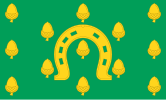
Agnellus of Pisa, OFM, was an Italian Franciscan friar. As its first Minister Provincial in England (1224–1236), he is considered the founder of the Franciscans in England. His feast day is variously observed on 7 May or 10 September.
The Brothers of Penitence or Friars of the Sack were an Augustinian community also known as Boni Homines or Bonshommes, with houses in Spain, France and England.

Ashridge Priory was a medieval college of Austin canons called variously the "Brothers of Penitence" or the "Boni Homines". It was founded by Edmund of Almain in 1283 who donated, among other things, a phial of Christ's blood to the abbey. It was granted to Mary Tudor, Queen of France and later became the private residence of the future queen Elizabeth I. It was acquired by Sir Thomas Egerton in 1604 and then passed down to the Duke of Bridgewater before being demolished.
Sack Friary, Bristol was a friary in Bristol, England. It was established in 1266 and dissolved in 1286.

Derby Black Friary, also known as Derby Dominican Priory, or Blackfriars, Derby, was a Dominican priory situated in the town of Derby, England. It was also named in different sources as a friary, monastery and convent, but was officially a priory as it was headed by a prior. The "Black" came from the colour of the mantles worn by the friars of the order.
Greyfriars Nottingham was a Franciscan friary in Nottinghamshire, England. It was founded c. 1224–1230, and dissolved in 1539 as part of King Henry VIII's Dissolution of the Monasteries. The site of the friary is now occupied by the Broadmarsh Shopping Centre.
Guildford Black Friary was a medieval monastic house in Surrey, England.
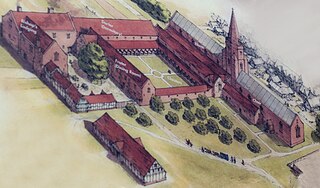
The Franciscan Friary was once a large estate located on the west side of Lichfield city centre in Staffordshire. The estate was built and inhabited by the Franciscan Friars from 1237. At one time the estate consisted of a large church, a cloister, dormitory lodge and a refectory building as well as many other domestic dwellings.

King's Langley Priory was a Dominican priory in Kings Langley, Hertfordshire, England. It was located adjacent to the Kings Langley Royal Palace, residence of the Plantagenet English kings.
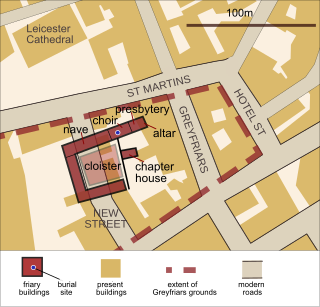
Greyfriars, Leicester, was a friary of the Order of Friars Minor, commonly known as the Franciscans, established on the west side of Leicester by 1250, and dissolved in 1538. Following dissolution the friary was demolished and the site levelled, subdivided, and developed over the following centuries. The locality has retained the name Greyfriars particularly in the streets named "Grey Friars", and the older "Friar Lane".
Leicester Austin Friary is a former Augustinian Friary in Leicester, England.

Blackfriars Leicester is a former Dominican Friary in Leicester, England.
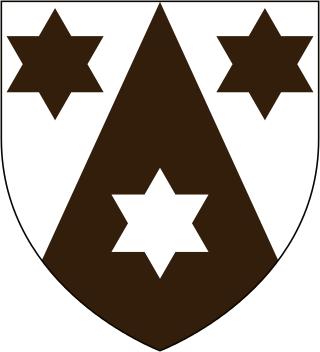
Nottingham Whitefriars is a former Carmelite monastery located in Nottingham, England.
Newark Friary, also known as Newark Greyfriars, and Newark Observant Friary, was a friary of the reformed "Observant Friars" of the Franciscan Order, located in the town of Newark, Nottinghamshire, England. The friary as founded by Henry Tudor c. 1499, and dissolved by his son, Henry VIII, in 1539.
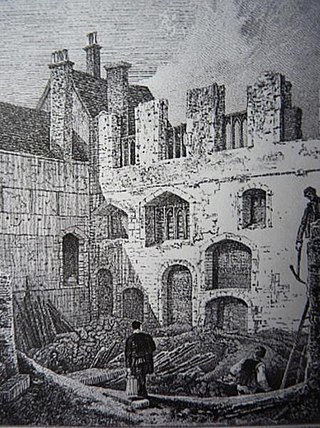
The Abbey of the Minoresses of St. Clare without Aldgate known also variously as the "Abbey of the Blessed Virgin Mary, Aldgate" or the "House of Minoresses of the Order of St Clare of the Grace of the Blessed Virgin Mary" or the "Minoresses without Aldgate" or "St Clare outside Aldgate" or the "Minories, London" was a monastery of Franciscan women living an enclosed life, established in the late 13th century on a site often said to be of five acres, though it may have been as little as half that, at the spot in the parish of St. Botolph, outside the medieval walls of the City of London at Aldgate that later, by a corruption of the term minoresses, became known as The Minories, a placename found also in other English towns including Birmingham, Colchester, Newcastle upon Tyne and Stratford-upon-Avon.










